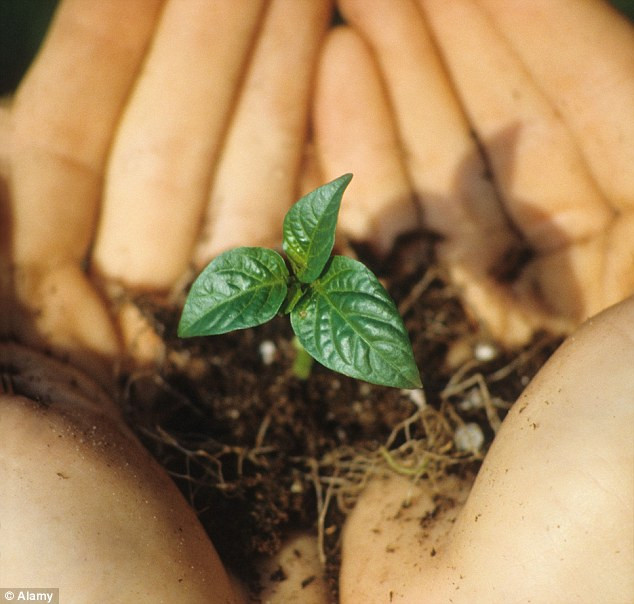New finding: 'Reverse photosynthesis' helps reduce pollution
The discovery of "reverse photosynthesis" will create changes in manufacturing in the industry and chemicals should reduce pollution significantly.
Plant biomass is the result of photosynthesis by plants thanks to sunlight. Part of the light will convert into chemical energy in plants that bind atoms into carbohydrate molecules. The bigger the accumulated carbon of the tree, the greater the biomass.
The current industrial production process relies heavily on the petrochemical industry, using oil and natural gas to produce materials. This entails high pollution and harms the environment. But scientists from the University of Copenhagen (Denmark) claim they have found a better way.

Finding "reverse photosynthesis" shows that by using sunlight, we can produce biochemical and biochemical fuels for things like plastic faster, at lower temperatures with energy efficiency. higher.(Photo: Alamy).
Research published in full text on Nature Communications points out: Through the "reverse photosynthesis" process - a process of decomposing biomass to create chemicals and energy - pollution will be minimized . Besides, the energy level is also faster, higher efficiency.
Our biological knowledge is taught that plants grow through photosynthesis - the ability to convert light energy into chemical energy for use. But with "reverse fusion" , solar energy is used to break down plant materials rather than help them grow.
Professor Claus Felby, the lead researcher, said: "This is a change, it changes the manufacturing in the industry and chemicals, thereby reducing significant pollution". He added that "photosynthesis by the Sun not only helps plants grow but the same principle can also be used to decompose substances in plants, release chemicals. This has always been the case but No one has ever noticed.
In other words, sunlight directly promotes chemical processes. Large energy from sunlight can be used to make it happen continuously without additional input energy. "
Dr. Klaus Benedikt Møller said: "We use the term" reverse photosynthesis " because enzymes use oxygen in the atmosphere and solar rays to break down and convert carbon bonds in the tree in the middle. other things instead of building cool homes and producing oxygen the way we usually do is the capital of ordinary photosynthesis. "

Under the "photosynthesis" process, some energy conversion reactions that now take 24 hours to complete will take only 5-10 minutes if the Sun is used.(Photo: Alamy).
According to the team, sunlight is collected by chlorophyll molecules and combined with natural enzymes called monooxygenases. When this enzyme is exposed to sunlight, decomposition accelerates.
While the process of producing biofuels or other materials from plant biomass may take a long time, photosynthetic reverse may cut down time to just a few minutes.
Dr. David Cannella explains: "This finding means that by using sunlight, we can produce biofuels and biochemicals for things like plastic faster, at lower temperatures with "The energy efficiency is higher. In some reactions that now take 24 hours to complete, it takes only 5 to 10 minutes to use the Sun."
The researchers say the finding shows the potential for decomposing carbon and hydrogen chemical bonds - which can turn methane into methanol. This liquid is used in the fuel, materials and chemical industries.
Biomass is a biological material from life, or more recently a living organism. Biomass is divided into two types: plant biomass (phytomass) and animal biomass (zoomass).Considered as a renewable energy source, biomass energy can be used directly, indirectly once or converted into other energy forms such as biofuels. Biomass can turn into energy in three ways: heat conversion, chemical conversion, and biochemical transformation. Right from the beginning, we all know how to use biomass materials to generate energy in the way of heat conversion, which is to burn dry wood, dry grass for heating .
- Photosynthesis method helps agriculture develop
- New street lamp design helps reduce light pollution
- China decided to reduce car smoke to cope with pollution
- Treating rural pollution with biological products
- Finding a catalyst can convert CO2 into clean energy
- Develop simple, cheap materials for 'artificial photosynthesis'
- What is light pollution? How to reduce light pollution
- Taking B vitamins may help reduce harm caused by air pollution
- Convert CO2 into carbon fuel
- 7 simple ways to reduce air pollution in your home
- Pollution, Iran's capital closed schools
- How did China 'rescue' people from air pollution?
 Is the magnetic North Pole shift dangerous to humanity?
Is the magnetic North Pole shift dangerous to humanity? Washington legalizes the recycling of human bodies into fertilizer
Washington legalizes the recycling of human bodies into fertilizer Lightning stone - the mysterious guest
Lightning stone - the mysterious guest Stunned by the mysterious sunset, strange appearance
Stunned by the mysterious sunset, strange appearance